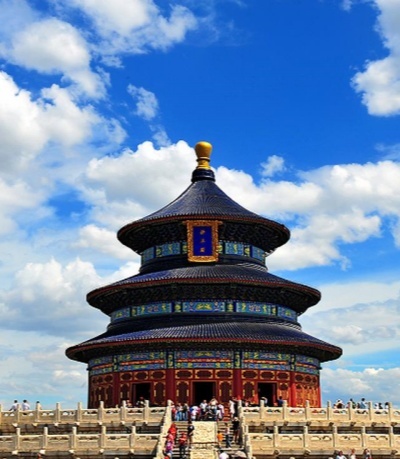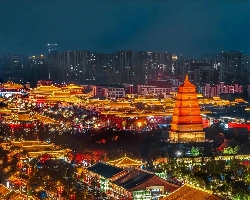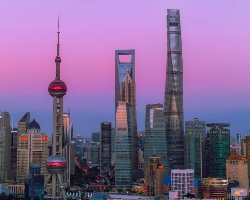- Home
- Tour Packages
- Destination
- About Us
- Contact
- Reviews
- Travel Guide
-
-
- Must-Go Destination Travel Guides
- Yunnan
- Guizhou
- Pingyao
- Hangzhou
- Guangzhou
- Guilin
- Chongqing
- Datong
- Huangshan
- Xiamen
-
-
-
- Customize Your Trip
Email:[email protected]
Email:[email protected]
Just China Tours, Just For You!
Top Shanghai Tea Houses | Traditional Chinese Tea Culture
- Home
- Top Shanghai Tea Houses | Traditional Chinese Tea Culture
Shanghai is a city known for its mix of modernity and tradition. One of the best ways to experience this blend is through its tea houses. Shanghai tea houses offer a unique cultural experience where visitors can enjoy traditional Chinese tea ceremonies, explore a variety of teas, and enjoy a peaceful atmosphere. Whether you're a tea enthusiast or just curious about Chinese culture, visiting a tea house in Shanghai is a must.
Introduction to Shanghai Tea Houses
Shanghai tea houses are more than just places to drink tea. They are cultural hubs where you can learn about the rich history of Chinese tea, relax, and immerse yourself in the local traditions. These tea houses offer a chance to experience a slower pace of life amidst the hustle and bustle of Shanghai. You can find a range of tea houses, from upscale establishments in the city’s fancy districts to charming, old-style tea houses in quieter areas.
Why Visit Shanghai Tea Houses?
A Taste of Traditional Chinese Tea Culture
Shanghai tea houses offer a window into China's deep tea culture. China has been drinking tea for thousands of years, and the tea house experience allows visitors to appreciate its art. In Shanghai, tea ceremonies are performed with great care. Tea masters will often explain the types of tea, how they're brewed, and the best ways to enjoy them. It's a chance to engage with a tradition that has been passed down through generations.
Relax in a Peaceful Environment
The atmosphere in most Shanghai tea houses is serene and calming. Many of them are designed with traditional Chinese architecture, featuring bamboo, wooden tables, and elegant decor. These spaces are perfect for unwinding after a busy day of sightseeing or shopping. Whether you're alone or with friends, the peaceful setting encourages relaxation and introspection.
Top Shanghai Tea Houses to Visit
Huxinting Tea House (湖心亭茶楼)
Located near Yuyuan Garden, Huxinting Tea House is one of Shanghai’s oldest and most famous tea houses. Set on a small island in a beautiful pond, it offers a picturesque setting. The building is designed in the traditional Chinese style, with intricate wooden carvings and a pagoda-style roof. Huxinting is famous for its Longjing tea (Dragon Well Tea), one of China's most renowned green teas.
At Huxinting, you can enjoy not only tea but also traditional Chinese snacks, such as sesame cakes and dumplings. The tea house is a great place to take a break from exploring the nearby Yuyuan Garden and experience an authentic tea ceremony.
Old China Tea House (老中国茶楼)
The Old China Tea House is located in the heart of the French Concession area. This tea house is known for its collection of rare teas and traditional tea ceremonies. The atmosphere is cozy and charming, with antique furniture and beautiful tea sets. Here, you can enjoy a wide selection of teas, ranging from green teas to oolong and pu-erh.
One of the highlights of visiting the Old China Tea House is the chance to attend a live tea ceremony. The tea masters perform the ceremony with precision and grace, allowing guests to witness the entire process. It’s an educational experience for those new to Chinese tea culture.
Tianshan Tea City (天山茶城)
Tianshan Tea City, located in the Hongqiao area, is a massive tea market with dozens of tea houses and tea shops. This is the place to go if you're interested in purchasing high-quality Chinese tea. Many of the tea houses here offer tastings and are happy to explain the differences between various types of tea.
At Tianshan Tea City, you can explore a wide variety of teas, including rare and premium options. The tea houses in this market also serve a range of tea-based dishes and snacks, making it an excellent spot for both learning about tea and sampling traditional Chinese treats.
Songfang Tea House (松芳茶楼)
For a more intimate experience, head to Songfang Tea House in the Huangpu District. This tea house is renowned for its elegant tea ceremonies, which are performed in a private, peaceful room. The space is small but inviting, with tea sets and Chinese artifacts on display. Songfang Tea House focuses on premium teas, particularly those from the Fujian and Yunnan provinces.
Visitors to Songfang are often treated to personalized service. The tea masters here are happy to explain the origins of each tea, the brewing process, and the best methods for tasting. If you're looking for an authentic, traditional experience, Songfang is a great choice.
Types of Tea Served in Shanghai Tea Houses
Green Tea
Green tea is the most popular type of tea served in Shanghai tea houses. Longjing tea, also known as Dragon Well Tea, is one of the most famous varieties. It is grown in Hangzhou, near Shanghai, and has a delicate, grassy flavor. Other green teas, like Bi Luo Chun and Jasmine tea, are also commonly served in tea houses around the city.
Oolong Tea
Oolong tea is a partially fermented tea that falls between green and black tea in terms of flavor. It is often served in Shanghai tea houses for its smooth, floral notes. Tie Guan Yin, a famous oolong tea from Fujian province, is a popular choice.
Black Tea
Black tea is another common offering in Shanghai tea houses. Known for its robust, bold flavor, black tea is often enjoyed with milk or sugar. Keemun tea, which originates in Anhui province, is a popular black tea choice in Shanghai.
Herbal Tea
Herbal teas, such as Chrysanthemum tea, are also widely available in Shanghai tea houses. These teas are made from flowers, herbs, and fruits, and are known for their soothing properties. Chrysanthemum tea is especially popular in Shanghai, often enjoyed for its cooling effects during the hot summer months.
How to Enjoy a Tea Ceremony at Shanghai Tea Houses
The Tea Tasting Process
When you visit a Shanghai tea house, you’ll likely be offered a chance to participate in a tea ceremony. The process starts with the tea master selecting high-quality tea leaves. They will then heat water to the right temperature and pour it over the tea leaves, allowing them to steep for the perfect amount of time. The tea master will serve the tea in small cups, often with multiple infusions, so you can taste the difference in flavor with each pour.
Proper Tea Etiquette
In Shanghai's tea houses, there is a certain etiquette to follow. When receiving your cup, it’s customary to gently tap your fingers on the table as a sign of respect. You should avoid making loud noises while sipping the tea. It’s also polite to show appreciation for the tea ceremony by complimenting the tea master’s skills.
The Best Time to Visit Shanghai Tea Houses
While tea houses are open year-round, the best time to visit is during the cooler months, from fall to spring. During these seasons, you can enjoy the warmth and comfort of the tea houses, which offer a cozy escape from Shanghai's bustling streets. If you're interested in seeing how the tea is harvested, the best time to visit tea plantations around Shanghai is in the spring.
Shanghai tea houses provide a unique cultural experience that blends tradition with relaxation. Whether you’re looking to learn more about Chinese tea culture, taste a variety of teas, or simply enjoy a peaceful environment, these tea houses offer something for everyone. From historic locations like Huxinting Tea House to hidden gems in the French Concession, there is a tea house in Shanghai for every type of traveler. Don’t miss the chance to immerse yourself in the world of tea during your visit to this vibrant city.





